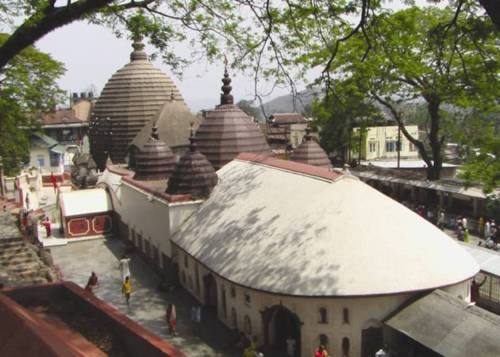Archives
Kamakhya Temple, Guwahati (Assam)
Kamakhya was known for its sacrifices and sorcery during the time of the Pala Kings between the 10th and 12th century A.D and has been referred to by the Muslim chroniclers as a temple that entrapped all who set foot on the soil of Assam, by its sorcery and magic.
According to Hindu mythology, the three worlds would have been destroyed had Lord Shiva been allowed to continue his dance of death with the body of his beloved on his shoulders. It was then that Vishnu, the Supreme God, came to the aid of the universe. He used his sudarshan chakra (the holy disc) to cut the body of Parvati into pieces. Pieces of her body were scattered all around till none remained on his shoulder, thereby bringing a calming effect on Shiva. The shrine of goddess Kamakhya is believed to be the place where the womb of Parvati had fallen when her corpse was being carried hither and thither by the grieving and furious Shiva.

The original temple of Kamakhya, destroyed by Kalapahar during the Muslim invasions of Assam early in the 16th century, was rebuilt in 1665 AD by the Koch King, Naranarayan and his mother Sukladhwaj or Chilarai in the style of a medieval Hindu temple. The present structure is typically Assamese with a beehive shaped Shikara. The temple is unique as compared to other temples in the country in that it enshrines no image of the goddess. Within a cave in the temple, stands a block of stone in one corner, on which the symbol of a yoni has been sculptured. The stone is kept moist from the oozing of the natural spring within the cave and offerings of flowers and leaves are made on the yoni.
Durga puja, locally known as Pakhuva Puja, is celebrated at Kamakhya for a period of fifteen days, beginning from Krishna Navami and continuing till Shukla Navami. Devotees from all over India also converge on this holy place during Ambubashi and Manasha Puja.

